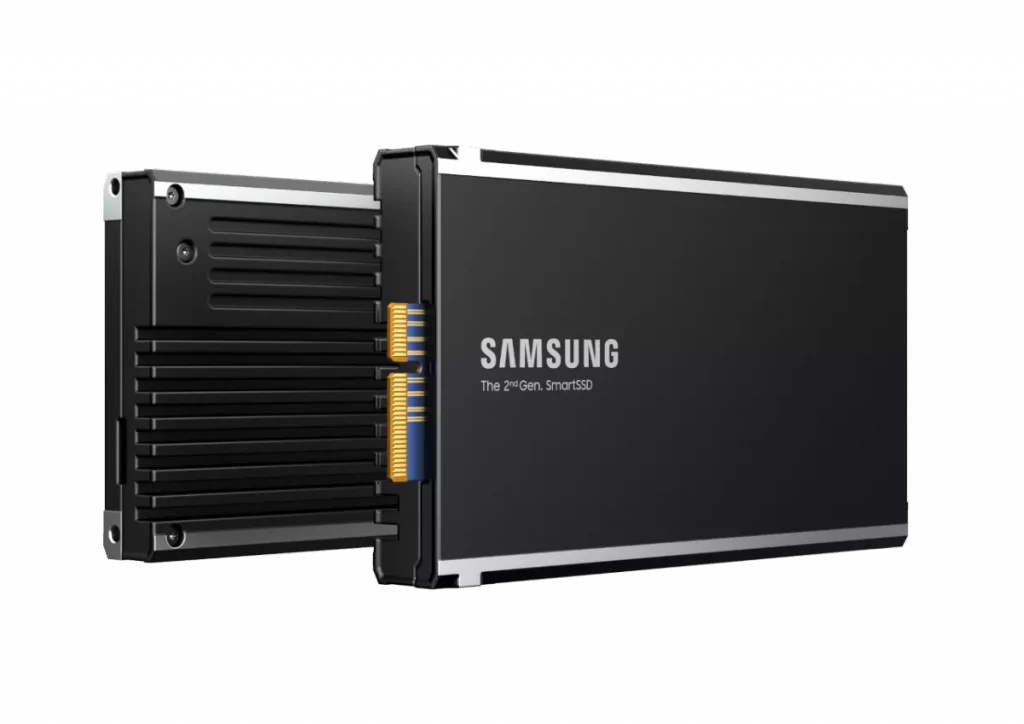The updated Computational Storage Device (CSD) from Samsung could become yet another crucial component in High Performance Computing (HPC) scenarios. With the use of an AMD Xilinx Versal FPGA, Samsung claims that their new product will reduce calculation times by 50%, power consumption by 70%, and CPU utilisation by 97.5% when compared to the cost of operating traditional SSD devices for frequently accessed data. Just now, the SmartSSD got smarter.
Samsung’s second-generation SmartSSD can analyse data on its own thanks to the recent AMD-Xilinx marriage, which was consummated on February 14th like any other mainstream love tale. While it may appear that this is an instance of solving a problem that doesn’t exist, it actually resolves one of the most critical bottlenecks in HPC: the flow of data between various components of the compute pipeline.
Data processing takes place immediately within the SSD, eliminating the need to move it back and forth between storage banks. Due to the fact that there are no additional trips between the central processing unit and the data storage device itself, this not only frees up bandwidth for the flow of other data. Additionally, it frees up the system’s CPUs from processing data reads and writes to the CSD’s memory banks to more performance-critical operations.
In 99 percent of cases, the end user may not even notice the cost, but as the volume of processed data grows, the system becomes more taxed when reading and writing the data. Given the extraordinary compute density of today’s systems, shifting even a modest amount of computation to a component that is more passive than the CPU helps to disperse the heat produced more effectively.

The Arm processors incorporated into the second-generation Samsung Smart-SSD are especially well-suited to the low-power, low-temperature conditions of an SSD deployment inside of a supercomputer.
The AI/ML inferencing market, business intelligence analysis, big data analytics, video transcoding, financial services, genomics, search queries, and transparent compression are among the industries that Samsung claims the CSD is specifically targeted toward.
“Commercialization of the first-generation SmartSSD, in collaboration with AMD, established that the computational storage market has great potential,” said Jin-Hyeok Choi, Executive Vice President and Head of Memory Solution Product & Development at Samsung Electronics in a press release. “With the upgraded processing functionality of the second-generation SmartSSD, Samsung will be able to easily address increasing customer needs in the database and video transcoding sectors, as we expand the boundaries of the next-generation storage market.”
It at least helps free up the CPU cores for the additional percentage points of work. The benefits of the 97 percent reduction in CPU load compared to a standard SSD will allow more work to be done within the same CPU or GPU given the power budgets for supercomputers.
Also Read:
AMD EPYC 9654 Genoa 96 Core monster Benchmarked in Latest Cache and Memory tests







